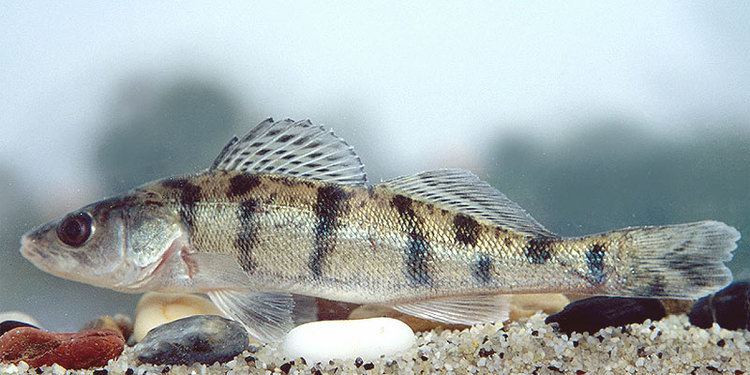Genus Sander Higher classification Sander | Phylum Chordata Scientific name Sander volgensis Rank Species | |
 | ||
Similar Asp, White‑eye bream, Pelecus cultratus, Ide, Common rudd | ||
The volga pikeperch on chapman stick
Sander volgensis, the Volga pikeperch or Volga zander, is a species of fish in the perch family Percidae. It is found in Austria, Bosnia and Herzegovina, Bulgaria, Croatia, Hungary, Moldova, Romania, Russia, Serbia, Montenegro, Slovakia, and Ukraine.
Contents
Description
The Volga pikeperch is considerably smaller than the zander or common pike-perch (Sander lucioperca). It grows to a maximum length of 40 cm (16 in), weighing 2 kg. It differs from Sander lucioperca by not having large "vampire" like canine teeth, also the colour is more silvery-grey than green, with much more distinguishable dark stripes on the side. Its second dorsal fin has nineteen to twenty-one branched soft rays and the number of scales along the lateral line is seventy to eighty-three.
Distribution and habitat
The Volga pikeperch is found in the northern Black Sea basin from the Danube, as far upstream as Vienna, to the Kuban River drainages. It is also present in the Caspian Sea basin in the Volga River and Ural River drainages. It inhabits large, turbid rivers and lakes, as well as brackish estuaries and may make short migrations to breed.
Biology
The Volga pikeperch is most active at dusk and dawn when it feeds on small fish and invertebrates. Males become mature by the age of three or four and females a year later, at a minimum length of 20 cm (8 in). Breeding takes place during April and May in shallow water with a sandy or gravelly bottom. The male scrapes a shallow depression in the substrate or among the roots of vegetation in which the female deposits one of two or three small batches of eggs. The larvae and juvenile fish are pelagic and feed on zooplankton.
Status
The IUCN has listed the Volga pikeperch as being of "Least Concern". It has a wide range, and although the population trend is unknown, no particular threats have been identified.
